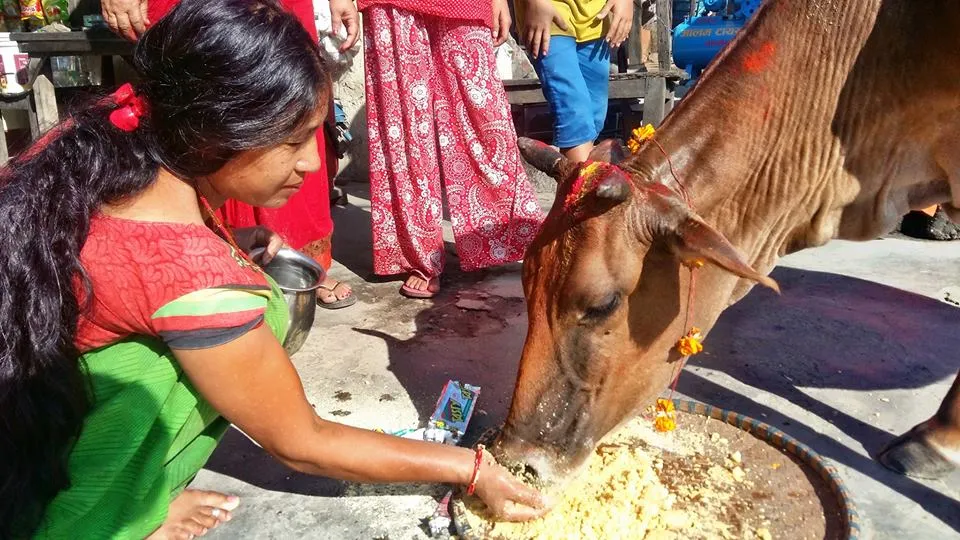
The morning of the third day is Gai Tihar (love of the bovine). In Hinduism, dairy animals means success and riches. In antiquated circumstances individuals profited a great deal from the cow. Its drain, waste, even pee was utilized for purposes like cleansing. Therefore, on this day individuals demonstrate their thankfulness to the dairy animals by garlanding and nourishing them with the best grass. Houses are cleaned and the entryways and windows are brightened with laurels made of Saya Patri (marigolds) and makhamali (Gomphrena globosa) blooms.
At night Laxmi, the goddess of riches is expressed gratitude toward for every one of the advantages that were offered on the families by lighting oil lights (Diyo) or candles on entryways and windows to welcome flourishing and prosperity. During the evening the young ladies appreciate moving and going to every one of the houses in the area with melodic instruments singing and moving known as Bhailo throughout the night gathering cash as a tip from houses and offer the abundance among themselves.
From the third day ahead Tihar is praised with Deusi and Bhailo with light and firecrackers. Deusi is generally sung by the young men while the Bhailo is sung by the young ladies. Deusi is balladic and recounts the account of the celebration, with one individual describing and the rest as the theme. Consequently, the mortgage holders give them cash, products of the soil (a Nepali roundel made of rice flour and sugar). These days social specialists, lawmaker, and youngsters visit nearby homes, sing these tunes, and gather stores for welfare and social exercises.
Circumstantially, Laxmi Puja likewise denotes the birthday of Laxmi Prasad Devkota, who is broadly respected and regarded as the best writer of Nepali dialect.
Pic: Pooza Shrestha